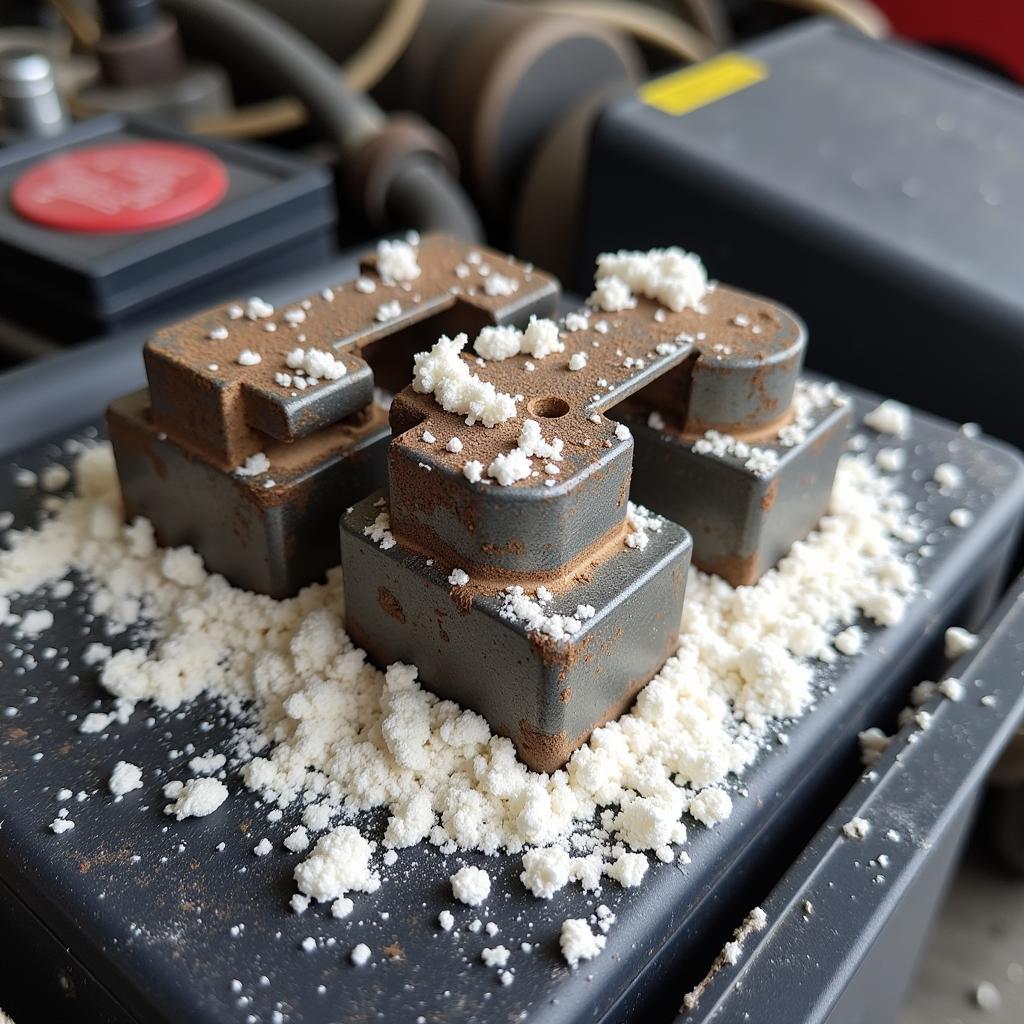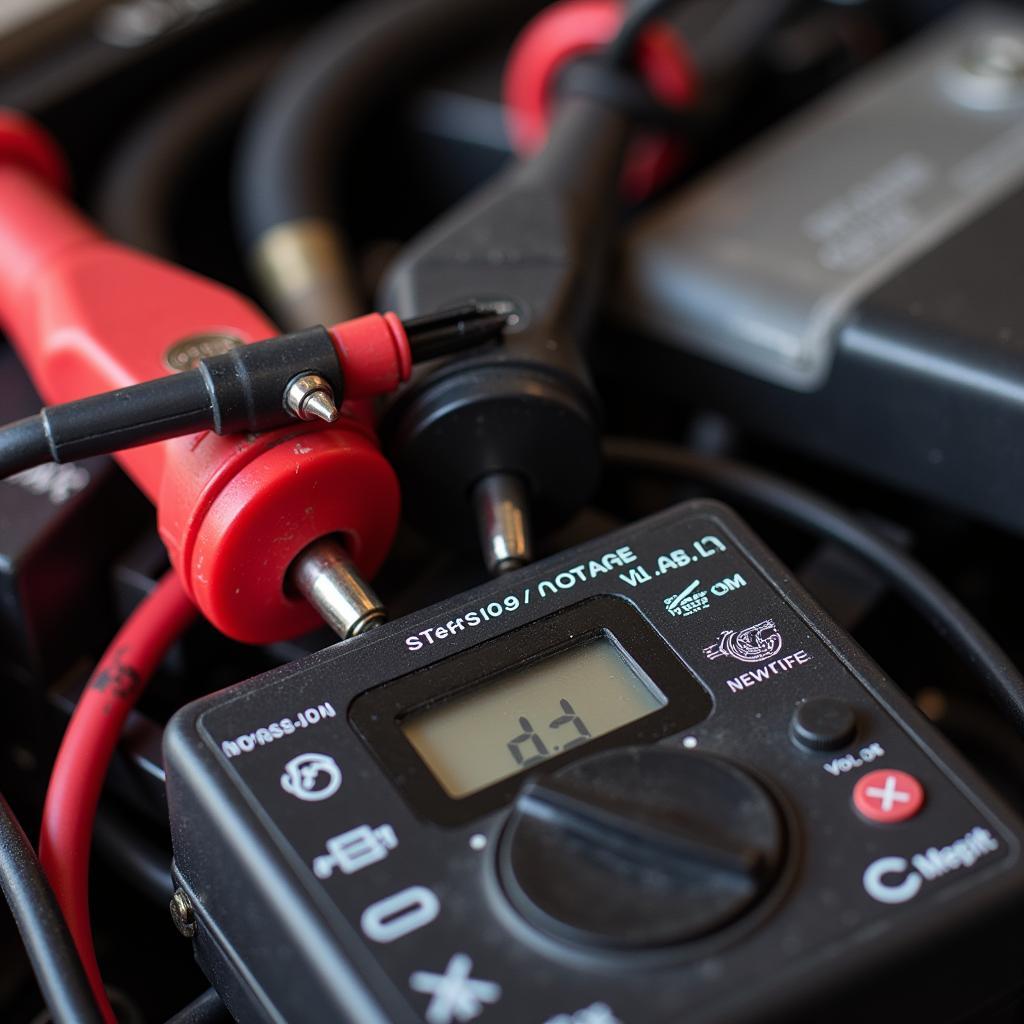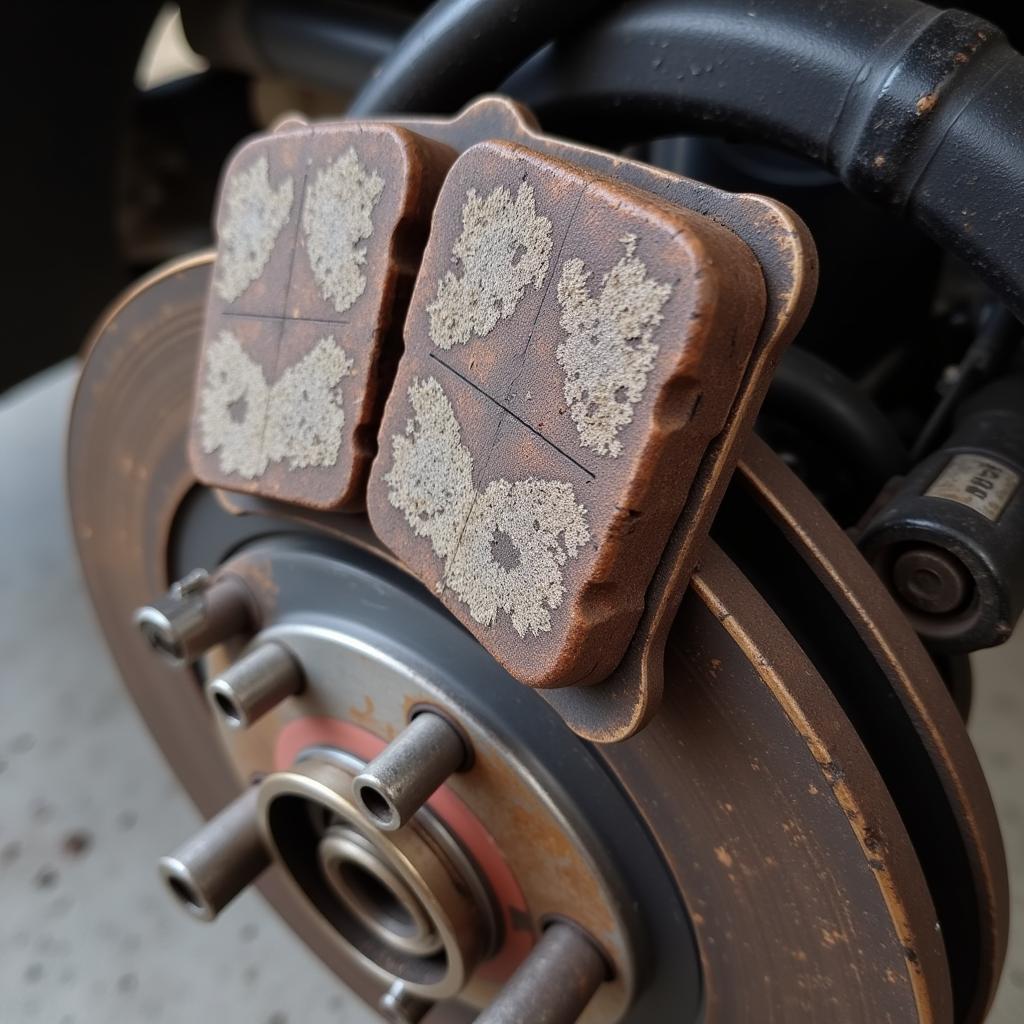A dead car battery is a frustrating experience, especially when it happens repeatedly. If your car battery won’t keep charge, you’re not alone. This guide provides expert advice on diagnosing, troubleshooting, and fixing a car battery that constantly drains, covering everything from simple checks to advanced diagnostic techniques. will a battery charger charge a completely dead battery
Why is My Car Battery Not Holding a Charge?
Several factors can contribute to a car battery that won’t hold a charge. Understanding the underlying cause is crucial for effective troubleshooting. These can range from a simple parasitic drain to a more serious issue with the alternator or charging system.
Common Culprits Behind a Draining Car Battery
- Parasitic Drain: This occurs when electrical components continue to draw power even after the car is turned off. Common culprits include interior lights, faulty door switches, or aftermarket accessories.
- Failing Alternator: The alternator is responsible for recharging the battery while the engine is running. A malfunctioning alternator can prevent the battery from receiving a proper charge.
- Old or Damaged Battery: Batteries have a limited lifespan, typically 3-5 years. Over time, the internal components degrade, reducing their ability to hold a charge. Physical damage, such as cracks or leaks, can also contribute to premature battery failure.
- Extreme Temperatures: Both extreme heat and cold can negatively impact battery performance and lifespan.
- Corroded Battery Terminals: Corrosion on the battery terminals can impede the flow of electricity, preventing the battery from charging or discharging properly.
 Corroded Car Battery Terminals
Corroded Car Battery Terminals
How to Diagnose a Car Battery That Won’t Hold a Charge
Troubleshooting a car battery issue requires a systematic approach. Here’s a step-by-step guide to help you pinpoint the problem:
- Visual Inspection: Check the battery for any signs of physical damage, such as cracks, leaks, or swelling. Also, inspect the battery terminals for corrosion.
- Battery Test: Use a multimeter or a battery tester to check the battery voltage. A fully charged battery should read around 12.6 volts.
- Alternator Test: With the engine running, the voltage should be around 13.7-14.7 volts. A lower reading indicates a potential alternator issue.
- Parasitic Drain Test: Use a multimeter to measure the current draw with the ignition off. A reading above 50 milliamps suggests a parasitic drain.
- Load Test: A load test simulates the demands placed on the battery during starting. This test can reveal if the battery is capable of holding a charge under stress.
Simple Fixes for a Car Battery Not Keeping Charge
Some common battery issues can be resolved with simple DIY fixes:
- Clean Battery Terminals: Remove any corrosion from the battery terminals using a wire brush and a mixture of baking soda and water.
- Jump Start the Car: If the battery is completely dead, jump-starting it can get you back on the road. However, this is a temporary solution, and the underlying cause should still be addressed. jumping off a dead car battery
- Charge the Battery: Using a battery charger can help replenish a depleted battery. car battery completely drained
When to Seek Professional Help
If the simple fixes don’t resolve the issue, or if you’re unsure about performing the diagnostic tests, it’s best to consult a qualified automotive technician. They can perform more advanced diagnostics and recommend the appropriate repairs.
“Regular battery maintenance, including cleaning terminals and checking voltage, can prevent many common battery problems,” says John Smith, a certified automotive technician with over 20 years of experience. “Don’t wait until your battery dies to address potential issues.”
Preventing Future Battery Problems
- Regular Maintenance: Regularly inspect and clean the battery terminals.
- Limit Short Trips: Short trips don’t give the alternator enough time to fully recharge the battery.
- Turn Off Accessories: Make sure all lights and accessories are turned off when the car is parked.
- Store Your Car Properly: If you’re storing your car for an extended period, disconnect the battery to prevent drainage. new battery drained in car
- Consider Battery Replacement: Batteries have a limited lifespan and should be replaced every 3-5 years, or sooner if necessary. discovery 4 battery problems
Conclusion
A car battery that won’t keep charge can be a frustrating problem. By understanding the common causes and following the troubleshooting steps outlined in this guide, you can effectively diagnose and resolve the issue. Remember, regular maintenance is key to preventing future battery problems and ensuring reliable starting power.
 Testing a Car Battery with a Multimeter
Testing a Car Battery with a Multimeter
“Addressing battery problems promptly can prevent further damage to your vehicle’s electrical system,” adds Smith. “A simple battery check can save you time, money, and frustration in the long run.”
FAQ
-
How long should a car battery hold a charge without the engine running? A healthy car battery should hold a charge for several weeks, even without the engine running.
-
Can I drive with a bad alternator? While you can drive a short distance with a failing alternator, it’s not recommended. Eventually, the battery will drain completely, leaving you stranded.
-
How often should I replace my car battery? Most car batteries have a lifespan of 3-5 years.
-
What are the signs of a failing alternator? Dim headlights, flickering dashboard lights, and a whining noise from the engine compartment can indicate a failing alternator.
-
What is a parasitic drain? A parasitic drain is a continuous draw of power from the battery even when the car is turned off.
-
How can I test for a parasitic drain? You can test for a parasitic drain using a multimeter to measure the current draw with the ignition off.
-
Can extreme temperatures affect my car battery? Yes, both extreme heat and cold can negatively impact battery performance and lifespan.

